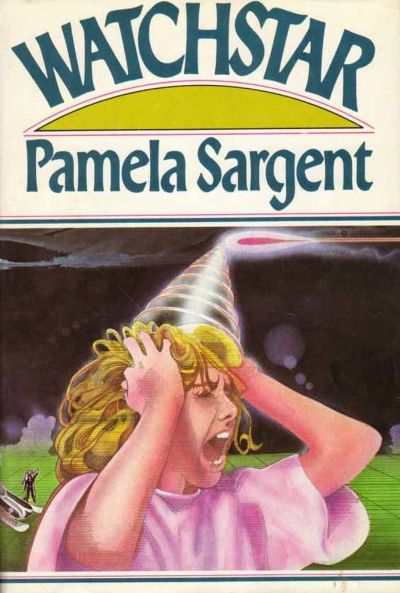That Long, Lonesome Road
Watchstar (Watchstar, volume 1)
By Pamela Sargent

19 Nov, 2023
1980’s Watchstar is the first volume of Pamela Sargent’s Watchstar young-adult science fiction trilogy1.
Daiya AnraBrun’s people are joined in a single community by their mental links. Their lives are made easier by their telekinetic gifts. They are comforted by the knowledge that one day they will leave their bodies to become part of the Merged Ones. Life is perfect.
If pressed, Daiya might admit she chafes under the relentlessly enforced conformity and finds the frequent infanticide (for eugenics reasons) distasteful. But these things may not bother Daiya for long, as she faces a rite of passage from which she is unlikely to return.
All youths must undergo a journey out of the village. The adults of the village refuse to discuss in concrete terms what awaits the youths undergoing the rite. Whatever the test is, it tests mental and physical strengths. Most youths die.
Daiya is an unconventional girl, more private than the norm. These characteristics may not work in her favour. Whatever the test is, it is designed to create the next generation of ignorant, incurious conformists. Since she is likely to reject that prospect, it’s likely that she will be weeded out. Yes, it’s sad that she might die, but this is a sacrifice that the Merged Minds are willing to make.
While wandering alone near the village before the test, Daiya encounters a stranger. Reiho is so unlike anyone in the village that Daiya initially finds it hard to recognize the telepathically silent boy as a person. Only with great difficulty does Reiho convince Daiya that he is a post-human who has arrived from space; the concepts involved are utterly foreign to Daiya.
Daiya sets off with her cohort to face the rite of passage. As far as the village knows, there is only a single way to survive the test. All other known alternatives lead to death. Meeting Reiho gives Daiya the crucial insight needed to see the test for the illusion it is. This is not the outcome intended. It will also not be welcomed. Daiya cannot return home without being denounced as an abomination.
To return to the village would be suicide. She and Reiho set out explore her world. Revelations abound; some will have tragic consequences.
~oOo~
I have this in paperback but I’ve used the SFBC art because I didn’t care for the Pocket cover.

This isn’t one of those books in which two communities are contrasted, both having flaws and strengths. Reiho’s people are post-humans, a little skew from the humans we know — but not evil. Daiya’s people are homicidal rustics eager to eliminate anything or anyone unusual.
The one scientifically implausible thing the SF author is allowed is, in this novel, real mental powers. Otherwise this is a hard-ish SF novel. Sargent has even thought through certain implications of the setting that other authors might have overlooked. For example, to compensate for the rite of passage’s high fatality rate (not to mention infanticide2) the village has lots and lots of babies, whom they lovingly raise until it’s time to send them off to almost certain death.
In fact, the mental powers do come in for some hard-SF justification. Reiho observes:
“But the power, the energy needed for such things must come from somewhere,” Reiho said. “Your bodies cannot provide it. Something else must generate it.”
Unfortunately for Daiyo, she learns the true source of the energy. It’s not that the source is awful, but the knowledge is new and her people believe that unfamiliar things are illusions or lies from an ill-defined evil being.
Generally speaking, stories like this find some path to a happy ending, either because the problematic community changes or because the protagonist finds a better place to live. But Daiyo’s people do not deal well with novelty3; they will never see her as anything but a disruptive element. Daiyo in her turn finds Reiho’s culture repellently alien, not somewhere she’d like to live. A stalemate and a less than happy ending.
This is a logical consequence of Sargent’s set-up; another example of Sargent playing what Clement called the game.
Sargent employs prose suitable for the audience. The story itself is extraordinarily bleak but fascinating. Recommended as long as readers don’t insist on everything working out in the end.
Watchstar is available here (Amazon US), here (Amazon Canada), here (Amazon UK), here (Apple Books), here (Barnes & Noble), and here (Kobo). I did not find Watchstar at Chapters-Indigo, even though the Kobo edition should have been visible.
1: The other two books in this series are Eye of the Comet (1984) and Homesmind (1984). I haven’t read them. Perhaps they are less bleak?
2: The villagers believe that telepathically silent children are rare, but two are born over the course of the novel.
3: By which I mean it drives them to homicidal fury.
